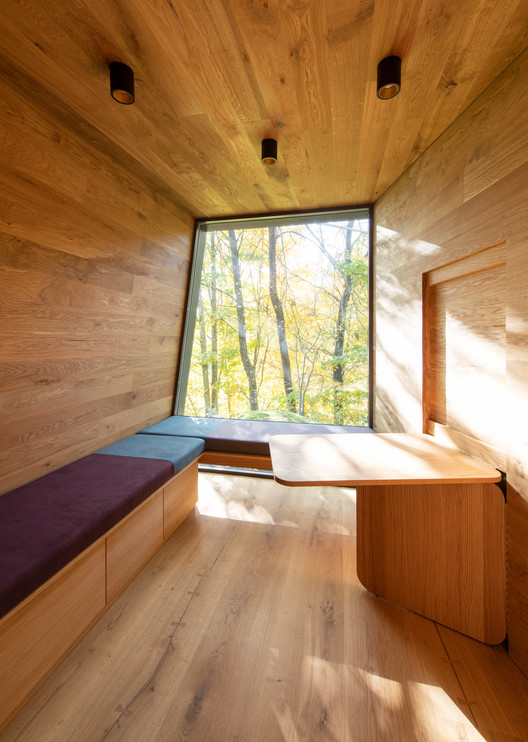House in Sakura Naoyuki Tokuda tokudaction
2018-10-18 23:00
架构师提供的文本描述。该项目包括翻修日本千叶县樱花市的一所旧房子。非常低的门廊(入口门廊)通向一个双高的起居室,两侧有宽的门廊(侧廊),有宽的门窗保护。随着高度从1.8米到5米,我们想要创造各种各样的内部尺度,以及一个超越“住房”建筑风格框架的地方。
Text description provided by the architects. This project consisted in the renovation of an old Japanese house in Sakura city, Chiba prefecture, Japan. The very low genkan (entrance porch) leads into a double-height living room flanked by wide engawa (side porches) protected by wide glazed openings. With celling heights that range from 1.8m to 5m, we wanted to create a variety of interior scales, and a place beyond the framework of the ‘housing’ architectural genre.
Text description provided by the architects. This project consisted in the renovation of an old Japanese house in Sakura city, Chiba prefecture, Japan. The very low genkan (entrance porch) leads into a double-height living room flanked by wide engawa (side porches) protected by wide glazed openings. With celling heights that range from 1.8m to 5m, we wanted to create a variety of interior scales, and a place beyond the framework of the ‘housing’ architectural genre.
主要的问题之一是确保,尽管每个房间都是不同的,但空间体验是一个持续的整体。这主要是通过仔细使用材料、纺织品和照明设备来实现的,由此尽管规模上的差异,每个房间都能共享一个共同的身份。
One of the main concerns was to ensure that, while every room is distinct, the spatial experience is that of a continuous whole. This is mainly pursued through the careful use of materials, textiles and lighting fixtures, whereby every room can share a common identity despite the differences in scale.
One of the main concerns was to ensure that, while every room is distinct, the spatial experience is that of a continuous whole. This is mainly pursued through the careful use of materials, textiles and lighting fixtures, whereby every room can share a common identity despite the differences in scale.
因为这是客户成长的地方,我们想在空间和材料中保留她的一些个人经验。因此,我们留下了原来的Souji(日本纸覆盖的推拉门)的位置,也保持了房子的几个小元素在他们原来的状态,只有最低限度的维修。我们喜欢把这些被遗忘的记忆看作是“脚印”,等待在建筑中被重新发现,丰富生活在那里的人们的生活。
Since this is the place where the client grew up, we wanted to preserve some of her personal experience within the space and materials themselves. Therefore, we left the original souji (Japanese paper-covered sliding door) in place, and also kept several small elements of the house in their original condition, with only minimum repair. We like to think of these forgotten memories as ‘footprints’, waiting to be re-discovered in architecture and enrich the life of the people living there.
Since this is the place where the client grew up, we wanted to preserve some of her personal experience within the space and materials themselves. Therefore, we left the original souji (Japanese paper-covered sliding door) in place, and also kept several small elements of the house in their original condition, with only minimum repair. We like to think of these forgotten memories as ‘footprints’, waiting to be re-discovered in architecture and enrich the life of the people living there.
像这样的翻新项目是一个难得的机会,也是一个独特的机会,可以平等对待内存和材料,将其作为设计组件。
A renovation project like this is a rare opportunity, and a unique chance to treat memory and material equally, as design components.
A renovation project like this is a rare opportunity, and a unique chance to treat memory and material equally, as design components.
 举报
举报
别默默的看了,快登录帮我评论一下吧!:)
注册
登录
更多评论
相关文章
-

描边风设计中,最容易犯的8种问题分析
2018年走过了四分之一,LOGO设计趋势也清晰了LOGO设计
-

描边风设计中,最容易犯的8种问题分析
2018年走过了四分之一,LOGO设计趋势也清晰了LOGO设计
-

描边风设计中,最容易犯的8种问题分析
2018年走过了四分之一,LOGO设计趋势也清晰了LOGO设计














































































































